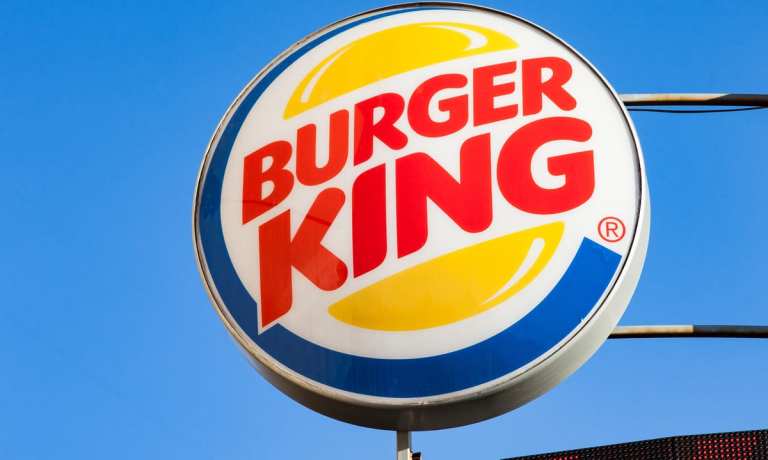Restaurant Roundup: Burger King, Wingstop Revive Chicken Sandwich Wars; Grubhub Free Lunch Promo Goes Awry

It would appear the chicken sandwich wars are not over yet.
In 2020 and 2021, noting the popularity of the menu item on online ordering marketplaces, dozens of leading restaurant brands rushed to debut their own new or updated chicken sandwich offerings, driving digital sales.
While the space has been quieter for a while, it would appear the war is ramping back up. Burger King is testing out three new versions of its chicken sandwich at some locations in New York City and Virginia, Chew Boom reported Saturday (May 14). The offerings include a BK Royal Crispy Chicken Sandwich, a BK Spicy Royal Crispy Chicken Sandwich and a BK Bacon and Swiss Cheese Royal Crispy Chicken Sandwich.
Burger King is not the only brand looking to drive digital traffic with new takes on the familiar menu item. Wingstop announced Monday (May 16) that it is trying out 11 flavors of its chicken sandwich in 60 restaurants across four states. Additionally, earlier in the month, Popeyes announced a limited-edition buffalo ranch chicken sandwich.
Moves such as these can be effective because when it comes to digital ordering, many consumers are driven more by specific menu items than they are by restaurant brands, preferring to weigh their options across brands over choosing from one restaurant’s menu.
“What their customers are searching for are products because it turns out that the savings are just so much more,” Will Said, co-founder and CEO of MealMe, a company that offers a digital ordering search engine for comparison shopping, told PYMNTS in an interview. “If you search for a given coffeehouse chain, you might get a few results. If you search for coffee, you get thousands of results… It turns out that not only is there a pretty large variance in delivery prices for the same store; there’s a large variance in item prices for the exact same product.”
Read more: Consumers More Drawn to Products Than Brands When Ordering Online
Grubhub Gets Swamped During Free Lunch Promo Leaving Many Dissatisfied
One might think that Grubhub promising everyone in New York City, a city of 8 million people, a free meal in one three-hour window could cause capacity issues at a time when restaurants and delivery services alike are experiencing widespread labor challenges. Sure enough, Grubhub’s free lunch offer in New York Tuesday (May 17) led to challenges.
See more: Grubhub Tells NYC That There Is Actually Such Thing as Free Lunch
“What that did across our entire platform, obviously, caused some unintended consequences,” Dave Tovar, senior vice president of communications and government relations at Grubhub, told The Washington Post.
NPR reported that many people saw their orders canceled, or their food simply never arrived. At peak, there were 6,000 orders per minute coming through the ordering marketplace. The app reportedly crashed for many people, and some restaurants were overwhelmed with unprecedented order volumes that they could not hope to complete.
“To help businesses prepare for yesterday’s promotion, we gave advance notice to all restaurants in our network, which included multiple forms of communications across email and in-platform,” a Grubhub spokesperson told TechCrunch. “Even with that preparation, no one could anticipate the level of demand, and unfortunately that caused strain on some restaurants. We’ll undoubtedly have a lot of learnings from this that can help us optimize and mitigate issues in the future.”
Schlotzsky’s Gets Into the Mobile Drive-Thru Lane
In the past couple of years, the rise in off-premise ordering has led to congested drive-thrus, with long wait times proving frustrating to many consumers.
Many restaurants are adapting to these changes by retooling their drive-thrus to fulfill orders more efficiently across digital and in-person channels. For instance, a range of brands have debuted double drive-thru concepts with lanes dedicated to digital orders.
Fast-casual chain Schlotzsky’s, for one, which has over 300 restaurants across 24 states, announced Monday the opening of the first location of its new prototype, which features a double drive-thru lane, with one lane accommodating traditional orders and the other for pickup of first- and third-party delivery orders.
“Over the past couple of years, we’ve been allocating resources and shifting focus to develop prototypes that offer increased convenience and ease of use for our guests…,” Shelley Harris, interim chief brand officer of Schlotzsky’s, said in a statement. “We know there is consumer demand for greater accessibility to their favorite Schlotzsky’s menu items, so this format, which is entirely focused on off-premise access, gives consumers what they are looking for and provides franchisees with a more compact restaurant design to consider for development.”
Both drive-thru and third-party delivery are highly in demand for today’s restaurant customers. Research from PYMNTS’ 2022 Restaurant Friction Index, created in collaboration with Paytronix, found that 35% of consumers would be more inclined to shop with restaurants that offered the ability to pick up orders at the drive-thru.
Read more: Loyalty Programs Best Way to Get Diners to Spend More
Additionally, research from the March/April edition of PYMNTS’ Digital Divide series, “The Digital Divide: Regional Variations in U.S. Food Ordering Trends and Digital Adoption, also created in collaboration with Paytronix, found that about one in three consumers order from delivery aggregators each month.
See more: New Research Shows That Regional Dining Quirks Matter in Tailoring Restaurant Offers